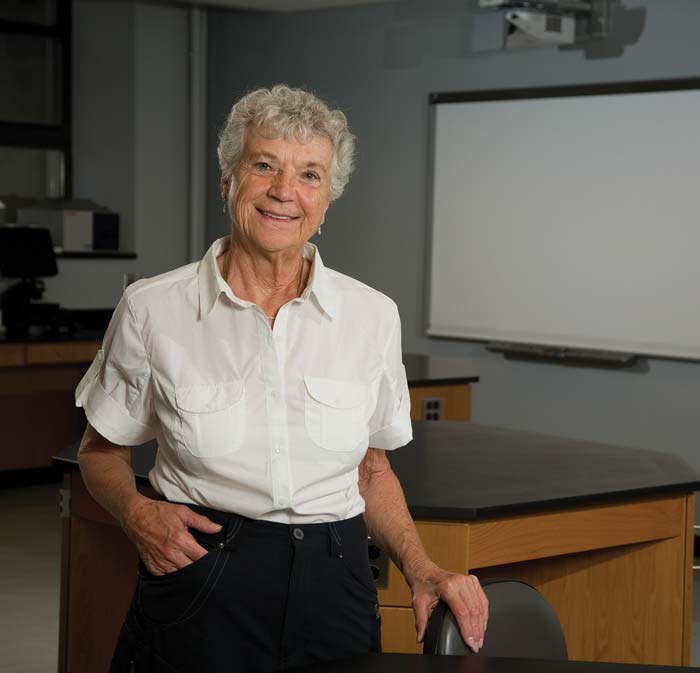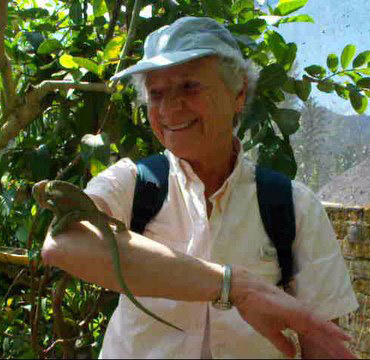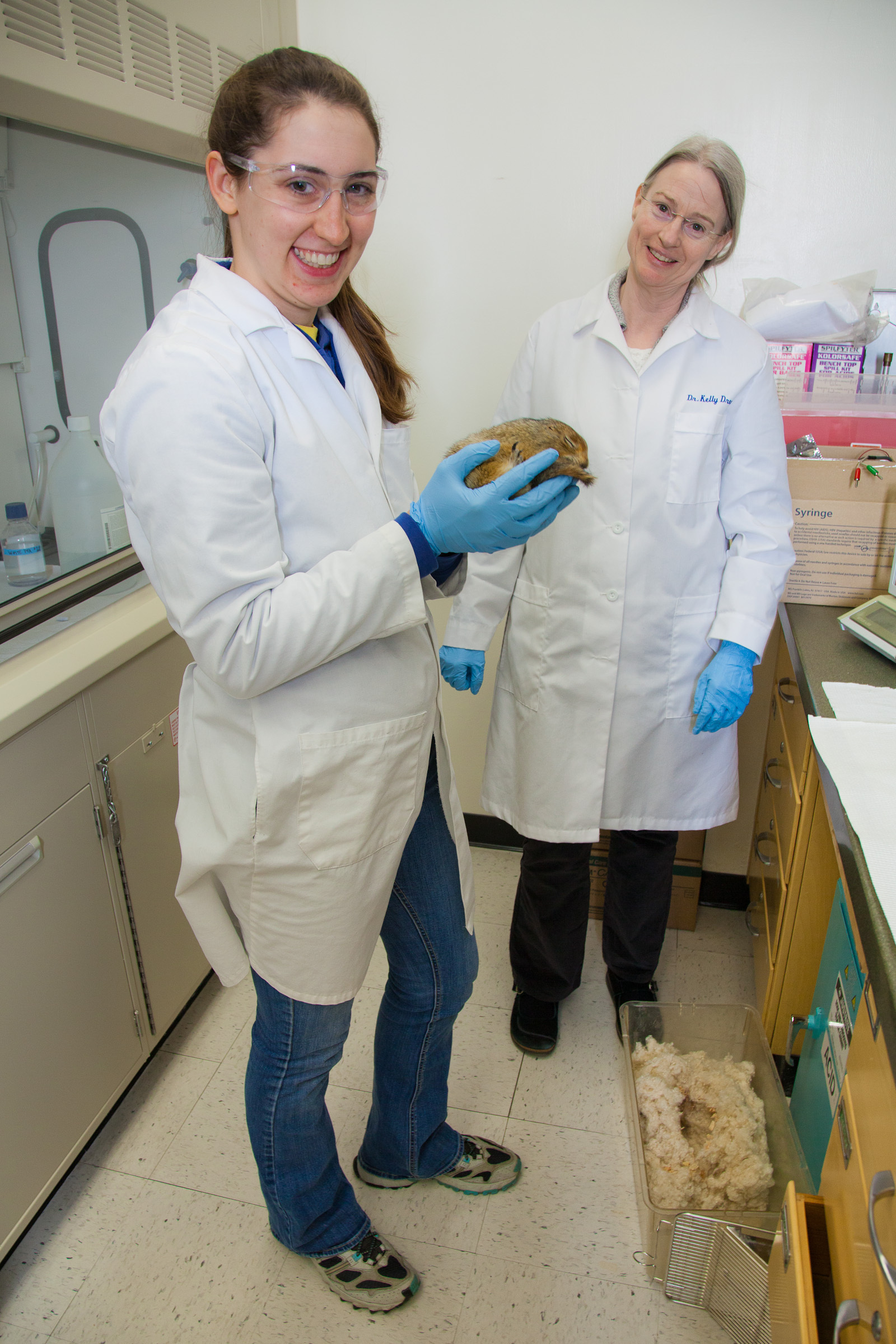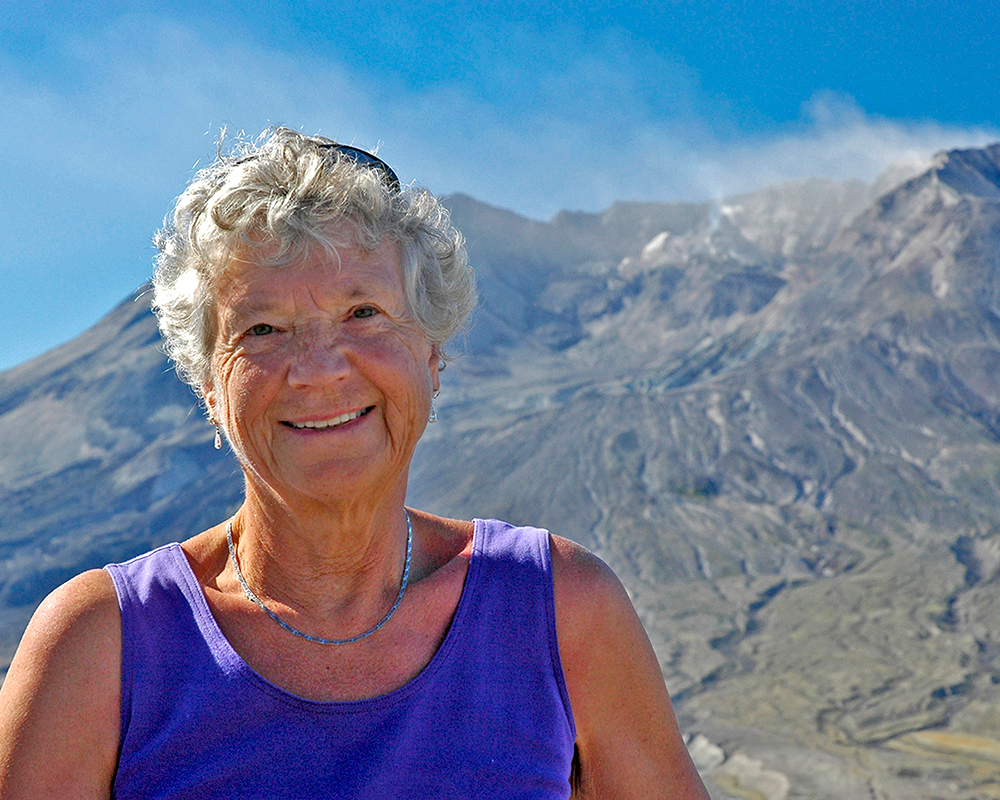Photo courtesy of Kelly Drew.
Carol Swarts and Kelly Drew stand by the Arctic Circle sign on the Dalton Highway
during their ground squirrel research trip.
By Megan Bean
Physician Carol Swarts first connected with University of Alaska Fairbanks scientist and fellow Nebraskan Kelly Drew at a lecture in Omaha more than two decades ago.

Carol Swarts stands in the bioengineering lab at the University of Nebraska-Lincoln.
Swarts was deeply moved by Drew’s work. Her contributions to understanding hibernation and its potential applications, such as the regeneration of neurons, aligned with Swarts' personal interest in Alzheimer's research.
Roughly two years later, the two women embarked on a transformative research expedition to the North Slope. During this journey, they captured ground squirrels for Drew’s hibernation research. Swarts vividly remembers the expedition.
“It was a privilege to camp on the North Slope at the height of summer and savor the endless days and the panoramic views,” Swarts said. “Kelly’s enthusiasm for the project and her care of the captive squirrels was focused on treating the animals with care, providing best accommodations and fresh food for them. It was a bonding and learning experience. And — ha! — don’t forget the mosquitoes that tried to carry us off.”
Then, and throughout the women’s 20-year friendship, Swarts has been amazed by Drew's exceptional capacity to translate findings from hibernation studies into practical advancements for human health.

Carol Swarts holds a lizard during a research trip to Madagascar.
Swarts hopes that her friend’s scientific legacy will support and inspire the next generation of scientists. In December 2023, she established the Professor Kelly Drew Physical Sciences Endowed Scholarship.
“Scholarships are not just financial aid; they represent collective support and investment in human potential,” Swarts said. “With scholarships, dreams become achievable, and barriers to education are dismantled, ensuring that everyone has the opportunity to thrive.”
Growing up during the Depression, Swarts experienced firsthand the hardships of financial scarcity. "I had very little. That's where I come from."
Despite facing adversity in her own life and career, particularly during an era when women faced considerable barriers in the medical field, Swarts persevered.
"The first challenge was that we were not wanted," Swarts said, referring to women scientists during that era. She defied societal norms and graduated from the University of Nebraska Medical Center College of Medicine in 1959, becoming one of only three women in a cohort of roughly 79 students.

Senior biology major Colleen Bue ’13 holds a ground squirrel while assisting professor Kelly Drew in the Irving Building in 2012.
Swarts’ career has included being the only physician for a hospital in what is now the Democratic Republic of Congo during a revolution in the early 1960s, helping undergraduate students learn about tropical forest ecology in Costa Rica, and treating Indigenous cancer patients in rural Alaska. She is an advocate for women in science and medicine, and a philanthropist who generously funds programs focused on science education and medical education.
Now, at the age of 90, Swarts continues to contribute to the medical community, lending her expertise to residents of not only Fairbanks but also the Seattle area. Her commitment to education and philanthropy is as unwavering as her dedication to medicine.
Swarts supports students, faculty and facilities at both her alma mater and UAF. Despite her numerous professional accomplishments and philanthropic endeavors, Swarts remains modest, emphasizing the importance of imparting the values of giving back to the next generation of students.
"My education made me who I am," she said.
Swarts’ generosity will help create that reality for students at UAF’s College of Natural Sciences and Mathematics, said Karsten Hueffer, the college’s dean. "Any giving to CNSM has an impact beyond the money. It helps students, but more than that, the students see that someone cares."
Hueffer isn’t surprised that Drew caught Swarts’ attention.
"Dr. Drew not only expands our understanding of fundamental biology but also illuminates pathways for applied biomedical applications, extending far beyond ground squirrels," he said. "The admiration and love of Kelly's students are a testament to her invaluable contributions, shaping not only UAF but also the broader medical and research communities."

Carol Swarts enjoys the view at Mount St. Helens after its 1980 eruption.
Drew has similar admiration for her longtime friend’s influence on the future of their field. Her journey has inspired generations of students to enter the physical sciences, Drew noted.
“Carol’s life story, akin to a migratory lifestyle, underscores resilience and adaptability, qualities we admire and seek to instill in students,” Drew said. “She embodies the concept of undiscovered talent; her example reminds us that lack of opportunity often masks immense potential. By supporting initiatives that foster inclusivity and accessibility, we can uncover and nurture such talent, ensuring that no opportunity goes unnoticed.”



